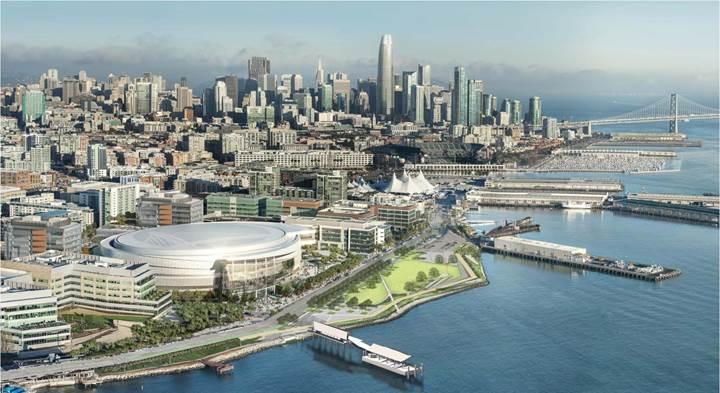Schedule
2016 Feasibility Study (complete) | 2019 Design & Permitting (complete) | 2021 Phase 1 Construction (complete) | 2024 Phase 2 Construction
Goals
- Provide a new ferry facility to enable regional water-based public transportation and emergency response
- Provide options for regional and trans-bay transit
- Support current and future transit demand and reduce vehicular trips in the Mission Bay and Central Waterfront area
- Provide transportation resiliency in the event of an earthquake, trans-bay connectivity failure or other unplanned events
- Engage the San Francisco community in the planning process for a working Central Waterfront

The Mission Bay Ferry Landing will provide critical regional ferry service to and from the fast-growing Mission Bay neighborhood and surrounding Central Waterfront communities. It will also connect communities across the Bay to water recreation and maritime activity on the San Francisco waterfront.
The new ferry landing is within a half mile of approximately 11,000 new housing units, 7 million square feet of new office and commercial space, over 1 million square feet of new retail space and 70 acres of public open space. Additionally, the terminal is planned within one block from the T-Third line and Central Subway, which is underway for extension to San Francisco’s Chinatown neighborhood. The terminal will be an easy walk to the Golden State Warriors Chase Center, the UCSF Mission Bay hospital and campus, and to San Francisco’s related life sciences community.
Mission Bay Ferry Landing will provide capability to berth two ferry boats simultaneously and it is estimated that the ferry landing will have the capacity to handle up to 6,000 passengers per day. The ferry landing is essential to alleviate current regional transportation overcrowding and provide transportation resiliency in the event of an earthquake, BART or Bay Bridge failure, or other unplanned events. Ferry service will reduce our community’s carbon footprint and the landing is designed to accommodate the expected sea level rise.
The Port of San Francisco and Water Emergency Transit Authority (WETA) are leading the project with the support of other City and regional agencies.